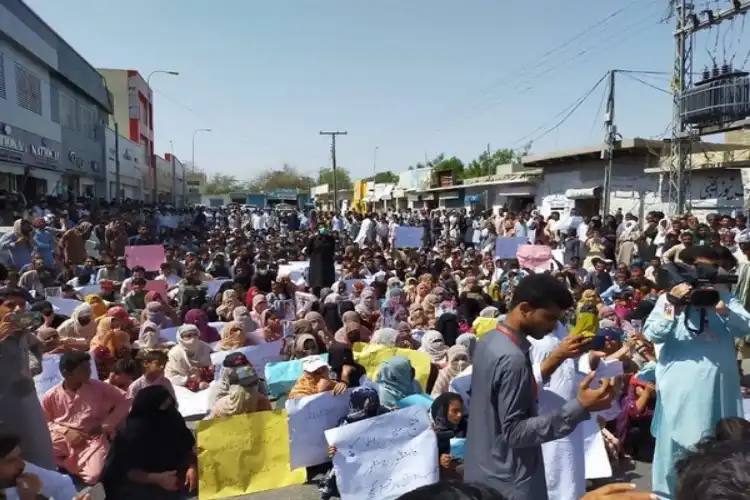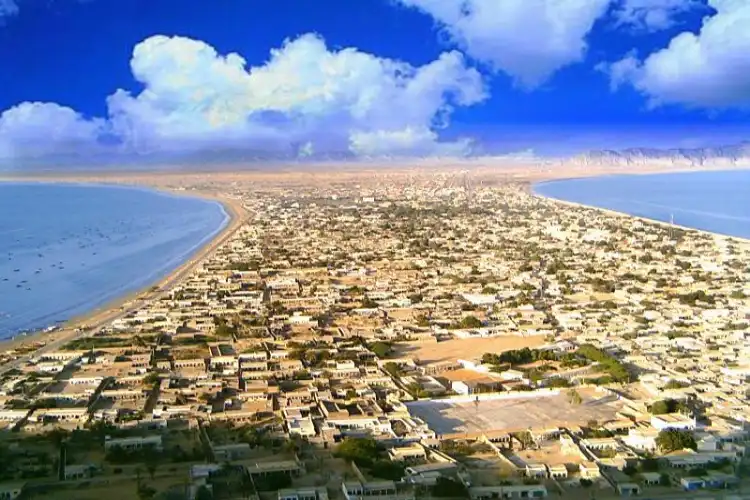J K Tripathi
For over the last one week, Pakistan’s “Pearl of the Arabian Sea”, Gwadar city is in turmoil. A sizable part of the population is marching on the city roads protesting against the lack of basic civic amenities - electricity, water supply – unwanted check posts, and the Chinese fishing trawlers. The protests erupted after severe power cuts that lasted 21 hours daily. Much of the potable water supply is diverted to Chinese settlements.
There is huge resentment against the presence of Chinese workers who have snatched the jobs of the locals. The huge Chinese trawlers involved in illegal fishing in the vicinity of Gwadar are eating up the livelihood of the locals.
Gwadar, the port city in Baluchistan, belonged to the Sultanate of Oman for more than 200 years till 1958. It is believed that Oman offered this city to India but Nehru rejected the offer saying that India didn’t want to have a colony outside its natural boundaries. It was, therefore, offered to Pakistan that did not have US$ 3 million to pay for it. So, Prince Agha Khan purchased it and gave it to Pakistan. As it is a natural port with the deepest water (huge ships with up to sixteen meters depth in water can be anchored here), Pakistan declared it a port in 1964. It wanted to develop it with the help of China and the latter made it part of the China-Pakistan Economic Corridor (CPEC) project.
An aerial view of the port City of Gwadar
The Chinese are interested in Gwadar for two reasons. Firstly, Gwadar is a good gateway to the Arabian Sea for the central Asian countries and China. By having direct access to the Arabian Sea by the road to Gwadar through POK, Punjab, and Sindh, China could avoid the longer route of Malacca Strait and the Suez Canal after circumventing the Indian peninsula for trade with the Middle East or Europe. Secondly, by developing Gwadar Port, the Chinese Navy can get a foothold in the Arabian Sea for its long-term expansionist designs. Notwithstanding the denials, China’s acquisition of an area almost ten times normally required for a port and fencing it with tight security and check-posts are clearly hinting at its military usage.
China wanted to turn Gwadar into a Chinese city by changing its demography. On 28th October 2017, CPIC (China Pakistan Investment Corporation) disclosed a plan with the involvement of a Chinese construction giant TIEC to settle half a million Chinese by 2023 in the proposed colony “China Pak hills Town’ on the outskirts. When the Pakistan Government, under domestic pressure, denied the existence of this plan, the CPIC produced documents in support of its claim. Thus, as against the estimated local population of 1,38,000 in Gwadar, 5,00,000 Chinese are being settled to reduce the locals to a minority. Most of the resources of the local municipality like electricity and water are being diverted to the Chinese population.
The setting up of an unusually large number of check posts in Gwadar that restricts the movement of locals has angered the people further. Pakistan leadership has turned a blind eye to the illegal Chinese trawlers near Gwadar that threaten the livelihood of the local fishermen who use small boats. Children have also joined the protest demanding “teachers in schools, a drug-free Gwadar, better healthcare and respect to their parents by the local authorities and the Chinese workers."
The discontent in Baluchistan defies an amicable solution. Islamabad would have to address the root cause of grave negligence of the Baluch population in general and specific problems of locals in Gwadar in particular.


